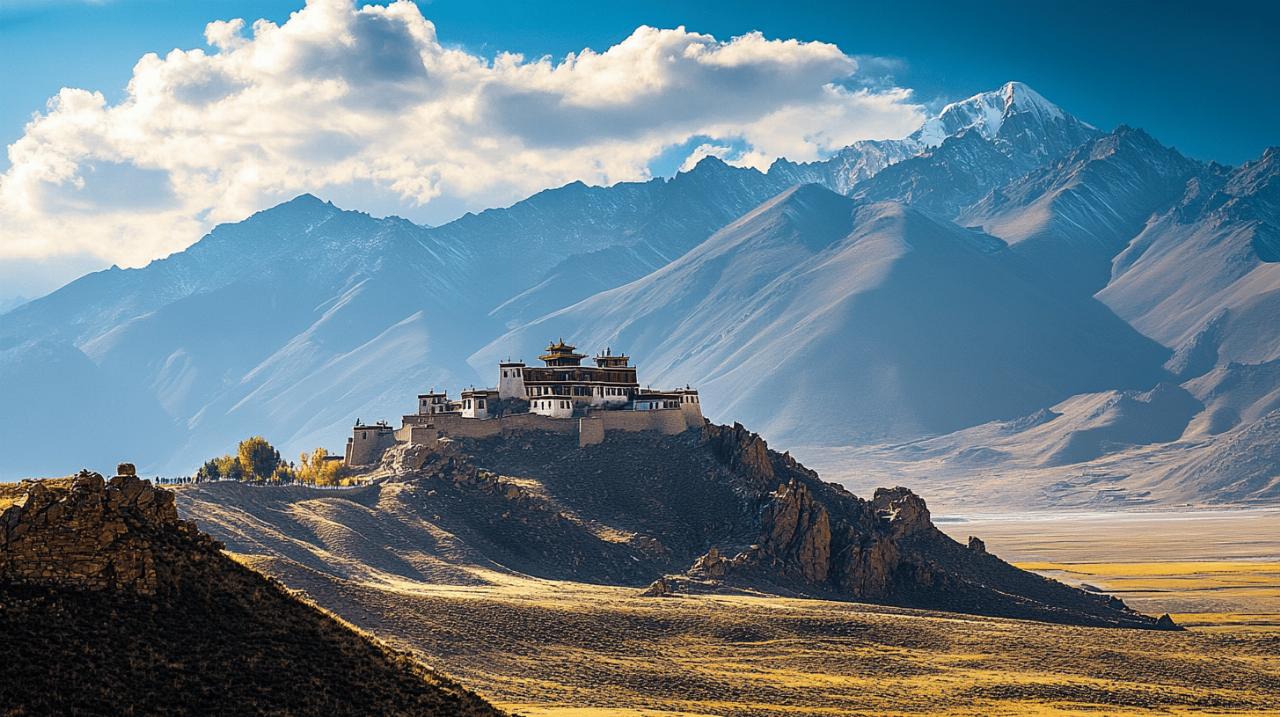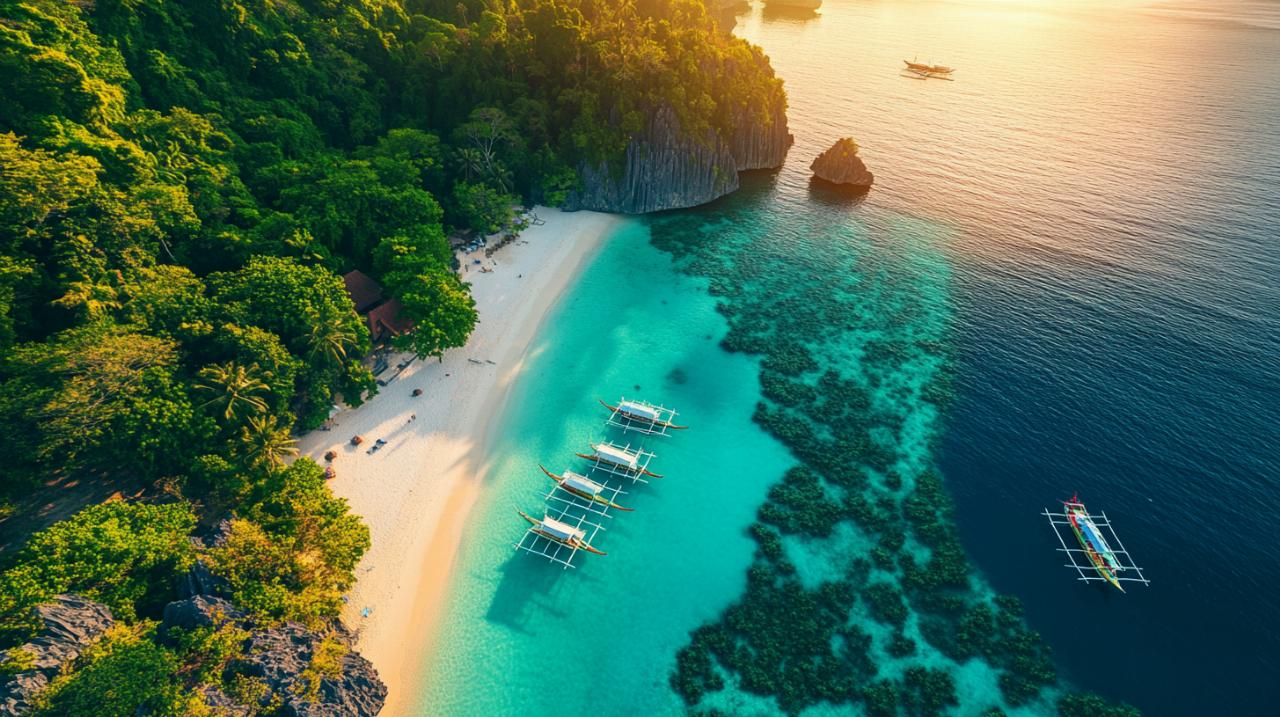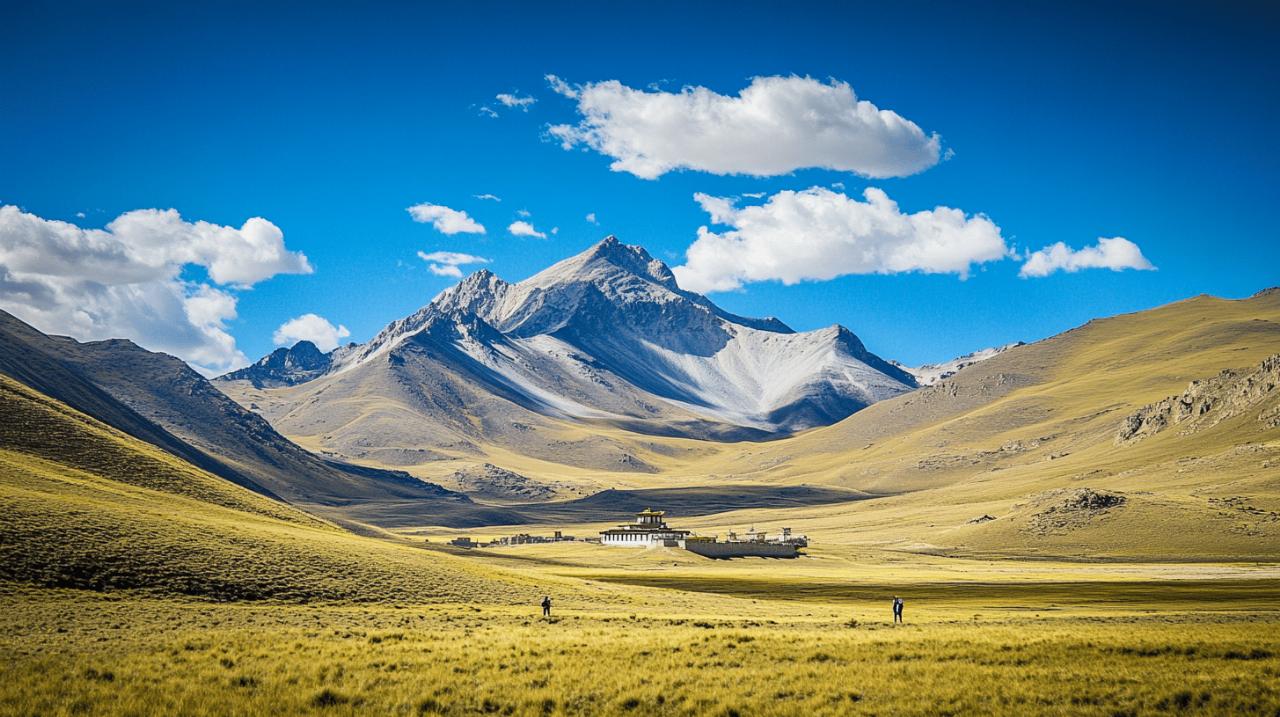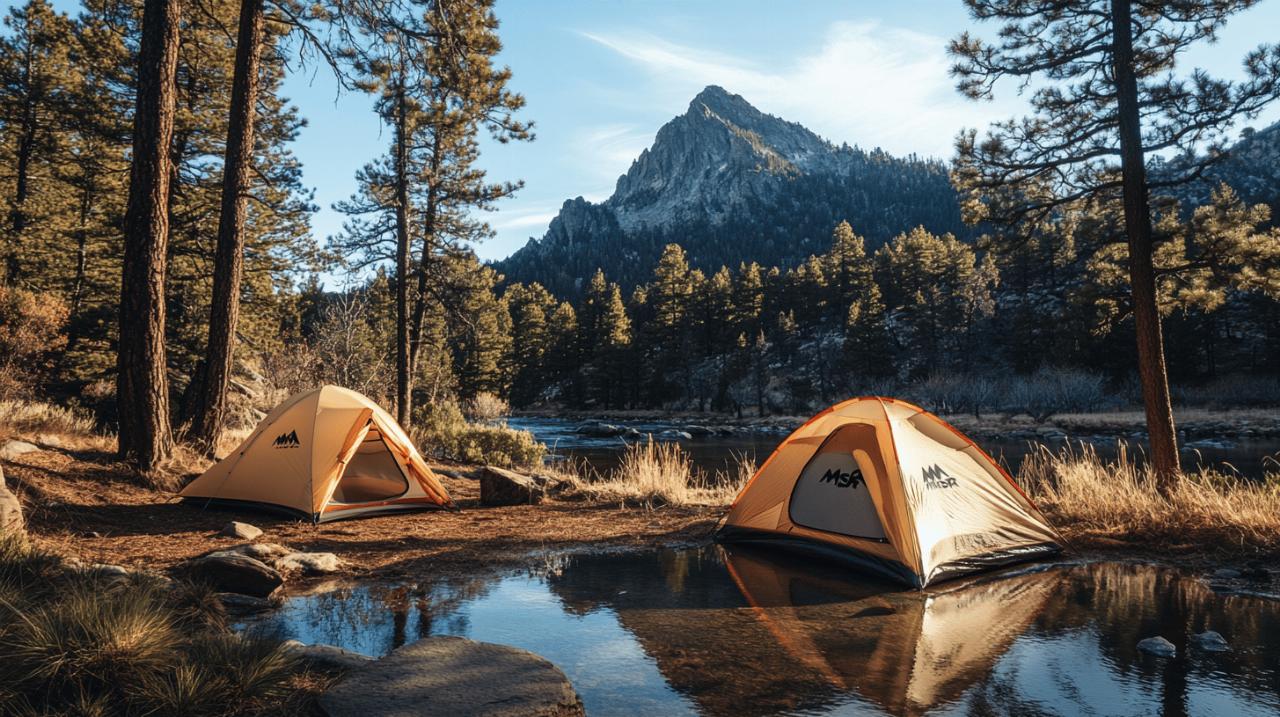Embarking on a journey to Tibet, often called the Roof of the World, is an adventure that promises breathtaking landscapes, spiritual encounters, and a profound sense of wonder. However, the region's high altitude, unpredictable weather, and remote locations mean that proper preparation is absolutely critical. This guide will walk you through the essentials of what to pack, from thermal layers to vital medications, ensuring your Tibetan experience is as comfortable and memorable as possible.
Clothing essentials: layering up for tibet's unpredictable weather
Base Layers and Thermal Wear for High-Altitude Comfort
When travelling to Tibet, the key to staying warm and comfortable is mastering the art of layering. The climate can be deceptive; whilst daytime temperatures may reach a pleasant twelve to fourteen degrees Celsius, nighttime conditions can plummet to minus twenty degrees or even lower. This dramatic fluctuation demands a strategic approach to dressing. Your first line of defence is a set of high-quality thermal base layers. These should be moisture-wicking, designed to draw perspiration away from your skin and keep you dry even during strenuous activity. Natural fibres such as merino wool are particularly effective, as they regulate body temperature and resist odours, making them ideal for multi-day treks. Over your base layer, add a fleece jacket or a lightweight insulated vest to provide an extra buffer of warmth without adding excessive bulk. A moisture-wicking T-shirt is also essential for wearing beneath your thermal layers during the day, especially when the sun is at its peak. Don't forget thick, thermal socks; your feet are especially vulnerable to the cold, and a good pair of socks can make the difference between comfort and misery. A warm hat or beanie is non-negotiable, as a significant amount of body heat is lost through the head. Similarly, insulated gloves and a scarf or buff will protect your extremities and neck from biting winds.
Outer Garments: Windproof and Waterproof Kit for All Seasons
Tibet's weather is notoriously unpredictable, and sudden changes are common. A sunny morning can quickly give way to howling winds and even snowfall, regardless of the season. Your outer layer must therefore be both windproof and waterproof. A high-quality, breathable jacket with a waterproof membrane is essential. Look for features such as adjustable hoods, sealed seams, and ventilation zips, which will help you manage your body temperature as conditions change. A down jacket is also highly recommended, particularly for the evenings or if you're planning to visit higher altitudes such as Everest Base Camp or Mount Kailash. Down provides excellent insulation for its weight and packs down compactly, making it easy to stow in your rucksack when not needed. For your lower half, quick-dry hiking trousers are ideal for daytime wear, offering freedom of movement and durability. However, you should also pack a pair of waterproof trousers for wet or snowy conditions. These can be worn over your regular trousers and will keep you dry during unexpected downpours. Finally, a wide-brimmed sun hat is crucial for daytime protection against the intense ultraviolet radiation at high altitude. The sun's rays are far stronger at elevation, and without proper protection, you risk sunburn and long-term skin damage.
Critical gear and equipment: what every traveller needs
Navigation tools, sun protection, and high-quality rucksacks
Beyond clothing, the right equipment can significantly enhance your comfort and safety during your Tibetan adventure. A sturdy, well-fitted rucksack is the cornerstone of any successful trip. Look for a model with a capacity of around forty to fifty litres for multi-day tours, with adjustable straps, padded hip belts, and multiple compartments for organisation. A smaller daypack is also invaluable for carrying essentials during day trips or short hikes, allowing you to leave your main luggage at your accommodation. Sun protection is another critical consideration. The high altitude means that ultraviolet radiation is far more intense than at sea level, and the risk of sunburn is considerable even on cloudy days. Invest in a high-factor sunscreen with an SPF of at least thirty, though fifty is preferable. Reapply it regularly throughout the day, and don't neglect your lips; a lip balm with SPF protection will prevent painful chapping. UV-protective sunglasses are equally important, not just for comfort but to guard against snow blindness and long-term eye damage. Choose a pair that offers full UV protection and fits snugly to prevent light from entering at the sides. Trekking poles are another piece of kit that can make a substantial difference, particularly if you're planning to tackle challenging terrain. They improve balance, reduce strain on your knees, and provide stability on uneven or slippery surfaces. A reusable water bottle is essential for staying hydrated, and a headlamp or flashlight is useful for navigating in the dark or during early morning starts. A portable charger or power bank is also highly recommended, as access to electricity can be limited in remote areas.
Electronics and Photography Equipment for Capturing the Roof of the World
Tibet offers some of the most spectacular scenery on the planet, and capturing these moments is a priority for many travellers. Whether you're a professional photographer or simply keen to snap some holiday photos, having the right equipment is essential. A good-quality camera with interchangeable lenses will allow you to capture everything from sweeping landscapes to intimate portraits of local people and monks. However, be mindful of the cold, which can drain batteries rapidly. Carry spare batteries and keep them warm by storing them close to your body. A robust camera bag with padding and weather protection is also a wise investment. If you're not inclined to carry a heavy camera, modern smartphones are capable of producing excellent images, provided you have a reliable portable charger to keep them powered. Don't forget memory cards with ample storage capacity, as you'll likely take far more photos than you anticipate. For those interested in night photography, a sturdy tripod is essential for capturing the star-studded Tibetan skies. China uses Type A, C, and I plugs with a voltage of 220V, so ensure you have the appropriate adapters and converters for your electronic devices. A local SIM card can be useful for staying connected, though coverage can be patchy in more remote areas.
Medical Kit and Altitude Medications: Staying Healthy at Elevation
Altitude sickness prevention: diamox and essential pharmaceuticals
 Altitude sickness is one of the most significant health risks when travelling to Tibet, where elevations routinely exceed three thousand metres. Lhasa itself sits at around three thousand six hundred and fifty metres, and popular destinations such as Everest Base Camp and Mount Kailash are considerably higher. Acute mountain sickness, or AMS, can affect anyone, regardless of fitness level, and symptoms include headaches, dizziness, nausea, and fatigue. In severe cases, it can progress to life-threatening conditions such as high-altitude pulmonary oedema or cerebral oedema. Prevention is therefore paramount. One of the most effective pharmaceutical aids is Diamox, also known by its generic name acetazolamide. This medication helps your body acclimatise more quickly by increasing the amount of oxygen in your blood. It's typically taken a day or two before ascending to high altitude and continued for a few days once you arrive. However, it's not suitable for everyone, and you should consult your GP before taking it. Your doctor may also prescribe other medications or advise on alternative strategies for managing altitude sickness. In addition to Diamox, pack a good supply of pain relievers such as paracetamol or ibuprofen, which can help alleviate headaches and general discomfort. Electrolyte tablets are useful for maintaining hydration and replacing salts lost through sweating. Anti-diarrheal medication and antibiotics are also recommended, as stomach upsets are not uncommon when travelling in remote regions.
Altitude sickness is one of the most significant health risks when travelling to Tibet, where elevations routinely exceed three thousand metres. Lhasa itself sits at around three thousand six hundred and fifty metres, and popular destinations such as Everest Base Camp and Mount Kailash are considerably higher. Acute mountain sickness, or AMS, can affect anyone, regardless of fitness level, and symptoms include headaches, dizziness, nausea, and fatigue. In severe cases, it can progress to life-threatening conditions such as high-altitude pulmonary oedema or cerebral oedema. Prevention is therefore paramount. One of the most effective pharmaceutical aids is Diamox, also known by its generic name acetazolamide. This medication helps your body acclimatise more quickly by increasing the amount of oxygen in your blood. It's typically taken a day or two before ascending to high altitude and continued for a few days once you arrive. However, it's not suitable for everyone, and you should consult your GP before taking it. Your doctor may also prescribe other medications or advise on alternative strategies for managing altitude sickness. In addition to Diamox, pack a good supply of pain relievers such as paracetamol or ibuprofen, which can help alleviate headaches and general discomfort. Electrolyte tablets are useful for maintaining hydration and replacing salts lost through sweating. Anti-diarrheal medication and antibiotics are also recommended, as stomach upsets are not uncommon when travelling in remote regions.
First Aid Supplies and Prescription Medications for Remote Travel
A comprehensive first aid kit is an absolute must for any trip to Tibet. Whilst your tour operator may carry basic medical supplies, it's wise to have your own kit tailored to your personal needs. Include adhesive plasters in various sizes, sterile gauze pads, medical tape, and antiseptic wipes for treating minor cuts and abrasions. A digital thermometer can help you monitor for fever, and tweezers are useful for removing splinters or ticks. If you wear contact lenses, bring a supply of eye drops to combat dryness caused by the arid climate and high altitude. A nasal spray can also provide relief if you experience sinus discomfort. Motion sickness pills are advisable, particularly if you're planning to travel by road, as the winding mountain routes can be challenging for those prone to travel sickness. Cold and flu medicine is another sensible addition, as changes in temperature and exposure to new environments can lower your resistance to infection. If you take any prescription medications, ensure you have more than enough to last your entire trip, plus a few extra days in case of delays. Carry a copy of your prescriptions and a letter from your doctor explaining your medical needs, particularly if you're travelling with controlled substances. Hand sanitiser and biodegradable wet wipes are invaluable for maintaining hygiene when soap and water are not readily available. Finally, consider packing water purification tablets or a portable filter, as access to clean drinking water can be limited in some areas.
Practical packing tips: maximising space and minimising hassle
Luggage organisation: packing cubes and weight considerations
Packing efficiently is an art, and when space is at a premium, organisation is key. Packing cubes are a traveller's best friend, allowing you to compartmentalise your belongings and keep your rucksack tidy. Group similar items together: one cube for undergarments and socks, another for tops, and a third for trousers. This not only saves space but also makes it far easier to find what you need without unpacking everything. Compression bags are another useful tool, particularly for bulky items such as down jackets or sleeping bags. By removing excess air, you can significantly reduce the volume of these items. However, be mindful of weight restrictions if you're flying, as airlines have strict limits on baggage. Aim to pack light, focusing on versatile items that can be worn in multiple combinations. Quick-dry fabrics are ideal, as they can be washed in a sink and dried overnight, reducing the number of changes of clothing you need to carry. Roll your clothes rather than folding them, as this minimises creases and maximises space. Place heavier items at the bottom of your rucksack, closest to your back, to maintain balance and reduce strain. Delicate items such as electronics or camera equipment should be wrapped in soft clothing for extra protection. Plastic bags or dry bags are invaluable for keeping wet or dirty items separate from the rest of your kit, and they also provide an extra layer of waterproofing.
Last-minute checklist: documents, currency, and travel insurance
Before you set off, take the time to double-check that you have all the essential documents. Your passport should be valid for at least six months beyond your planned departure date, and you'll need a Chinese visa as well as a Tibet Travel Permit, which can only be obtained through a registered travel agency. Make photocopies of all important documents, including your passport, visa, permits, travel insurance, and any medical prescriptions. Store these separately from the originals, and consider keeping digital copies on your phone or in cloud storage. Travel insurance is absolutely essential, particularly for a destination as remote as Tibet. Ensure your policy covers high-altitude trekking, medical evacuation, and trip cancellation. Read the fine print carefully, as some policies exclude activities such as climbing or require additional cover for altitudes above a certain threshold. Currency is another important consideration. Whilst cards are increasingly accepted in larger towns such as Lhasa, cash is king in more remote areas. Chinese yuan is the currency you'll need, and it's wise to carry a mix of small and large notes. ATMs can be scarce, so withdraw sufficient cash before heading into the countryside. A money belt or secure waist pack is a sensible way to carry your valuables, keeping them safe and out of sight. Finally, pack a notebook and pen for jotting down addresses, recording expenses, or keeping a travel journal. A travel pillow, earplugs, and an eye mask will make long journeys far more comfortable, whether you're on the train or in a vehicle. With careful planning and thorough preparation, your journey to the Roof of the World will be an unforgettable adventure, combining the thrill of exploration with the peace of mind that comes from being well-equipped.






